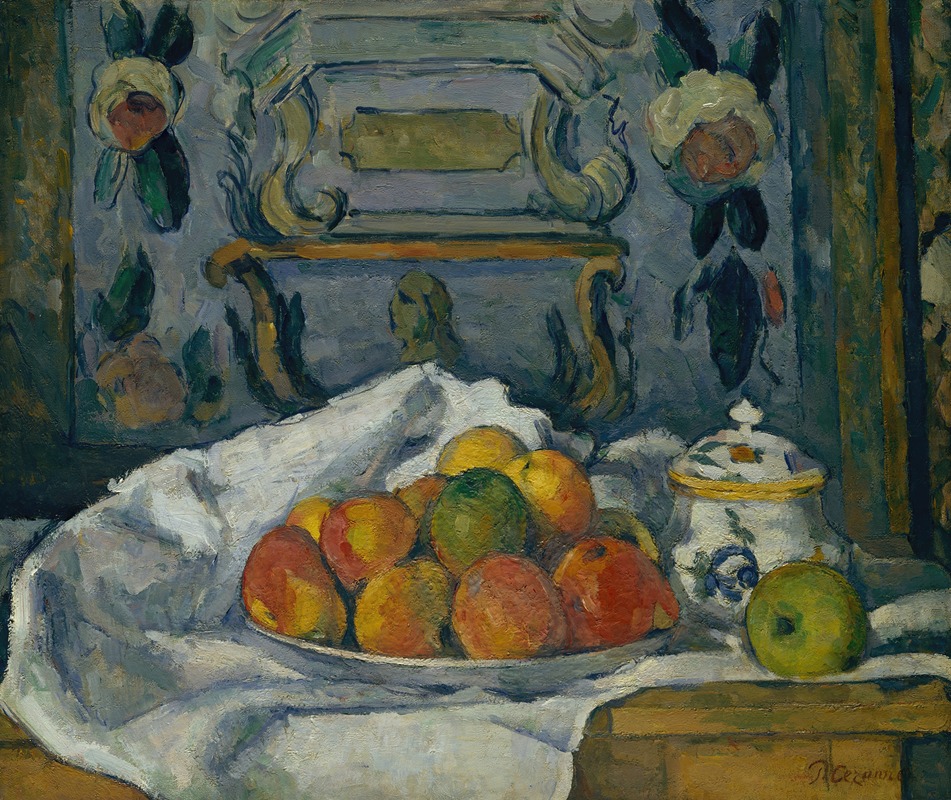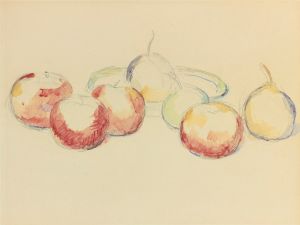
Dish of Apples
A hand-painted replica of Paul Cézanne’s masterpiece Dish of Apples, meticulously crafted by professional artists to capture the true essence of the original. Each piece is created with museum-quality canvas and rare mineral pigments, carefully painted by experienced artists with delicate brushstrokes and rich, layered colors to perfectly recreate the texture of the original artwork. Unlike machine-printed reproductions, this hand-painted version brings the painting to life, infused with the artist’s emotions and skill in every stroke. Whether for personal collection or home decoration, it instantly elevates the artistic atmosphere of any space.
Paul Cézanne was a pivotal French artist and Post-Impressionist painter whose work laid the foundations for the transition from 19th-century artistic concepts to a radically different world of art in the 20th century. One of his notable works is "Dish of Apples," which exemplifies his innovative approach to still life painting.
"Dish of Apples" is a still life painting that showcases Cézanne's distinctive style, characterized by his methodical brushstrokes and a keen interest in the exploration of form and color. The painting features a simple yet compelling composition of apples arranged in a dish, set against a modest background. This seemingly straightforward subject matter allowed Cézanne to delve deeply into the study of shapes, colors, and spatial relationships, which were central themes in his work.
Cézanne's approach to painting was meticulous and deliberate. He often painted the same subject multiple times, each time exploring different perspectives and techniques. In "Dish of Apples," Cézanne's use of color is particularly noteworthy. He employed a palette of rich, vibrant hues to bring out the natural beauty of the apples, using color to define form rather than relying solely on line and contour. This technique was revolutionary at the time and contributed significantly to the development of modern art.
The composition of "Dish of Apples" reflects Cézanne's interest in geometry and structure. He arranged the apples in a way that creates a sense of balance and harmony, yet there is also a dynamic quality to the painting. The interplay of light and shadow adds depth and dimension, inviting viewers to engage with the painting on a more intimate level. Cézanne's ability to capture the essence of his subjects while simultaneously challenging traditional artistic conventions is what makes his work so enduring and influential.
Cézanne's still lifes, including "Dish of Apples," were instrumental in the evolution of modern art. His innovative use of color and form inspired a generation of artists, including the likes of Pablo Picasso and Henri Matisse, who regarded Cézanne as a master and a precursor to Cubism and Fauvism. His work demonstrated that art could be both representational and abstract, paving the way for new artistic movements that would dominate the 20th century.
"Dish of Apples" is a testament to Cézanne's genius and his relentless pursuit of artistic truth. Through his exploration of everyday objects, he was able to transcend the ordinary and reveal the extraordinary, influencing countless artists and reshaping the course of art history. Today, Cézanne is celebrated as one of the most important figures in the history of art, and his paintings continue to be studied and admired for their profound impact on the development of modern art.


















